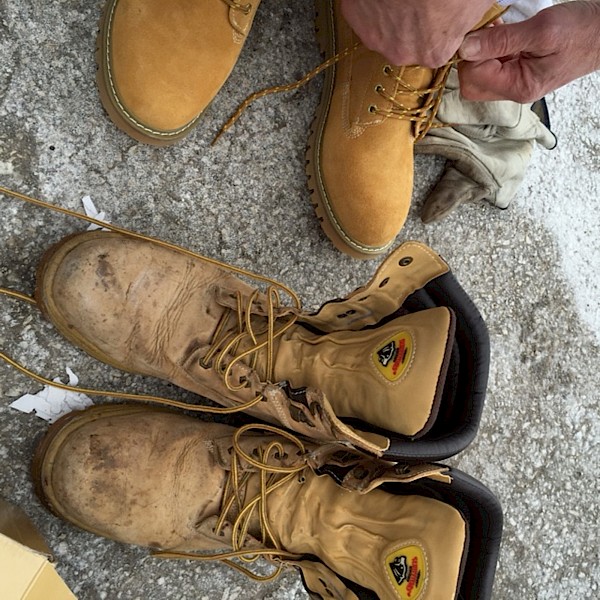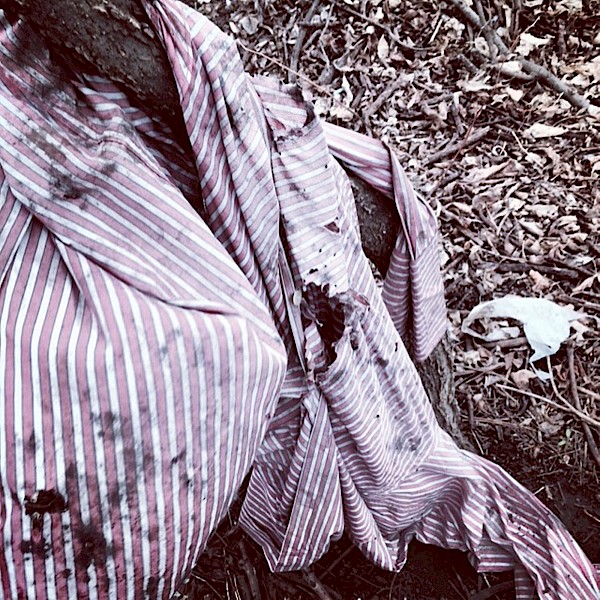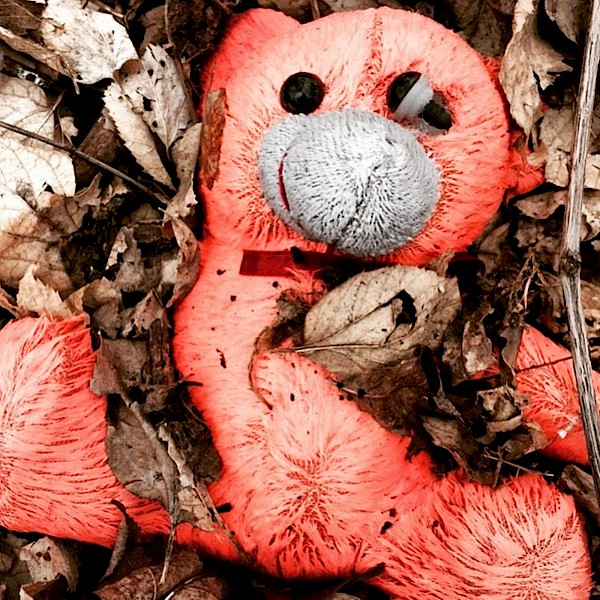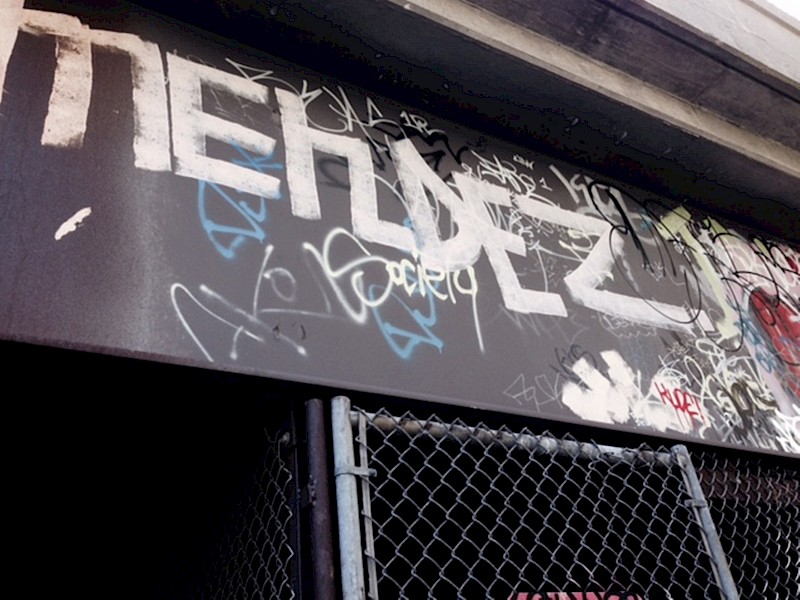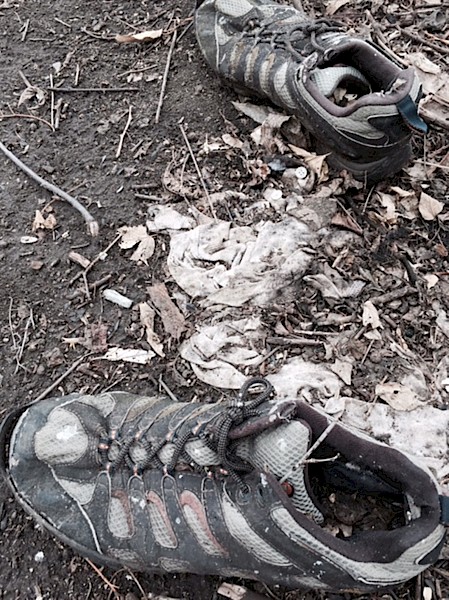Traces and spaces of those living on the margins of Milwaukee
—
At a recent community meeting to discuss homelessness and panhandling in Milwaukee, Wisconsin, the moderator displayed a series of photographs of homeless people, some of whom are known to us through our work as researchers and advocates. In one picture a man is lying on a bench, apparently sleeping, with his back to the camera. Another showed someone who appears to be asking for money on the street. These kinds of objectifying representations of homelessness and urban poverty are commonplace in the setting in which we work.
In this photo essay, we examine how other kinds of images of urban poverty and homelessness can open up more complex discussions about these social issues. Specifically, we examine particular traces and spaces of those living on the margins of Milwaukee – what Edensor (2005) refers to as the ‘materiality of the ruin’. Edensor (2005, 323) describes how ‘ad hoc montages of objects and other scraps found in ruins … are fortuitous combinations which interrupt normative meanings’ of ‘garbage’ and ‘trash’, as well as of the people who create it. Items that have been abandoned or appear disorderly can reveal something about those who inhabit or once inhabited urban space.
All of these images were taken in the context of our work with StreetLife Communities, a nonprofit organization that seeks to provide support to people who are experiencing homelessness and poverty. It is estimated that over 1,600 adults and children experience homelessness in Milwaukee (Brophy et al. 2009). This calculation leaves out the thousands of individuals who live on the edge of homelessness, in extreme poverty. These individuals may have shelter but often do not have access to material goods like shoes, coats, and clean clothes. Since 2013, StreetLife Communitieshas been providing a weekly community meal in a parking lot just outside of downtown Milwaukee. There, people receive food and hot coffee, and are also able to access basic necessities like shoes, clothing, and toiletries. Over time, we began accompanying individuals as they went back to the places where they were living and sleeping.
‘Threadbare’, ‘second-hand’, ‘third-hand’, and ‘used’ are all terms that describe the clothes and shoes many community members wore every day. Shoes were sometimes worn until there was almost nothing left.At our weekly community meal, old shoes were traded in for newer ones. The majority of people arrived in sneakers. Nearly every person we encountered spent many hours each day walking, regardless of their age, ability, or the weather, and running shoes were a kind of uniform. When new, this style of shoe provided comfort and cushioning. When worn out, running shoes covered the feet but did little or nothing to cushion or protect them from weather. While running shoes were perhaps the most popular footwear, work boots were also a commodity on the streets, and the most valued style – especially during the winter months – were waterproof leather work boots.
When parents and grandparents brought their children and grandchildren to the community meal, we were reminded that the realities of homelessness include children and infants. This point was driven home for one of the StreetLife Community volunteers on a cold Saturday morning. People were milling about in the parking lot, drinking coffee and eating sandwiches, thankful that the temperature was not below zero degrees. As our group was standing outside David’s truck, a volunteer asked, ‘What’s that on the back [truck] seat?’ ‘It’s a baby’, David replied. A family had asked us if they could use the shelter of the truck to keep their son protected from the elements while they ate their meals and received new winter coats. Though the child was warmly dressed, neither parent had a coat when they arrived. Discarded, abandoned, and lost toys in the places where people were living and sleeping were further evidence of the presence of children on the streets.
Over months and years we built trust with the community, and individuals began taking us to the kinds of places that only an insider could correctly identify as a living or sleeping space. In any urban environment, one can likely find alleyways where cardboard is strewn about on the ground like garbage. However, this cardboard may in fact constitute a kind of flooring that is placed over the concrete to keep the dirt and cold from the sleeping gear that is laid over it each night.
As we descended the steps on the side of a bridge, the air began to cool. Under the bridge, we could hear the cars rumble overhead. Little sun reached this place. When we arrived, we announced ourselves as we always did, whether someone was clearly present or not. Sometimes, those who occupied these kinds of ‘hidden’ spaces did not want company, and we would quietly depart. Those living in the margins inhabit spaces that are simultaneously invisible and in plain sight; though thousands of people may pass by these spaces on foot and in cars each day, most do not know that people are living there.
Traces and spaces of homelessness are everywhere. The sight of clothing hanging from a tree limb; discarded cardboard and cushions; cutlery and bowls; a pile of food wrappers, cans, and bottles – such items are all evidence of human habitation. Over time, we began to look for even more subtle signs of presence: a small opening in the woods, the corner of a fence peeled back, trampled and matted grass to form a trail, or a bungee cord holding closed the door of an abandoned house.
While images of homelessness and urban poverty often feature people, they provide little insight into who these individuals are and how they live their lives. In this photo essay, we explore the more complex understandings that can emerge from documenting the materiality of homelessness and urban poverty. These traces and spaces of homelessness and urban poverty are ‘symbols of failure and abandonment’ (DeSilvey and Edensor 2013, 475), but they are also evidence of how people continue to make a place for themselves in Milwaukee in spite of abandonment by the state.
About the author
David Nelson is an associate professor of family and community medicine at the Medical College of Wisconsin. Karen Nelson is an assistant professor of family and community medicine at the Medical College of Wisconsin. Jeanne and Mike Miller are volunteers with StreetLife Communities and Maxwell Ramsey is a pastor at Immanuel Baptist Church.
References
Brophy, Tom, Joe Volk, Jessica Shriver, and Janice Wilberg. 2009. ‘Homelessness in Milwaukee 2009: Results of the January 28, 2009, Point in Time Survey of Milwaukee’s Homeless Citizens’. Milwaukee, WI: Milwaukee Continnum of Care.
DeSilvey, Caitlin, and Tim Edensor. 2013. ‘Reckoning with Ruins’. Progress in Human Geography 37, no. 4: 465–85. http://dx.doi.org/10.1177/0309132512462271.
Edensor, Tim. 2005. ‘Waste Matter: The Debris of Industrial Ruins and the Disordering of the Material World’. Journal of Material Culture 10, no. 3: 311–32. http://dx.doi.org/10.1177/1359183505057346.
